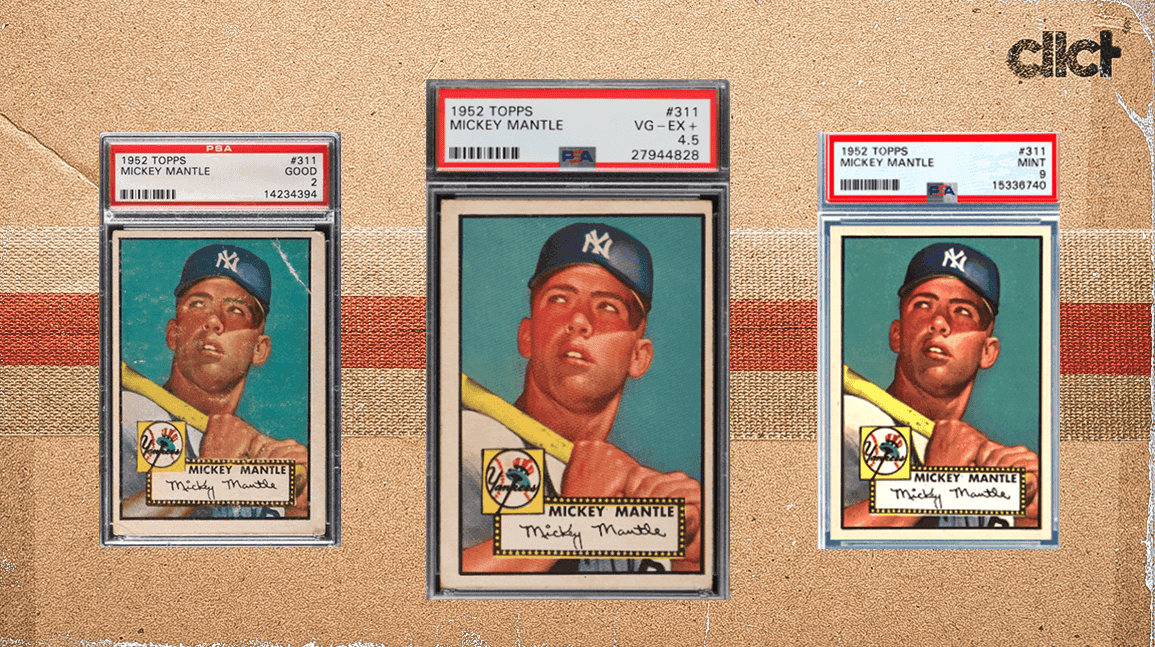For the first time in the company's 33-year history, PSA will include details explaining the exact reasoning behind its grades for trading card submissions.
Officially announced Tuesday, PSA’s Grader Notes will include details for the four primary grading categories — corners, edges, surface and centering — and highlight the specific defects that prevented a card from scoring a PSA 10.

Considered long overdue by many collectors, the addition of grader notes is a significant step forward in transparency for an industry that has always been highly secretive and highly subjective.
“I don’t know if I have a super elegant answer other than I just think it’s the right thing to do,” PSA president Ryan Hoge told cllct of the reasoning for the move. Hoge added he considers the change the most significant for the company since PSA added half-point grades in 2008.
Available for trading cards submitted at the Express service level and above, grader notes will appear to the customer once the grades are viewable. Currently priced at $129 per card, Express is used for cards with a declared value up to $2,500 with a five-business day turnaround.
With the vast majority of trading cards submitted in the Value tiers or as part of a grading special, PSA believed adding grader notes to Express and above was the right place to start.
“It was pretty simple, these customers are paying the highest rates to grade with us,” Hoge said. “And then the volume was something that we felt like we could handle based on how many of those types of cards we see coming in every day. We absolutely were not going to roll this out to every service level — from the jump we would like to make it available to more, but this is a safe place for us to start.”
First introduced as an idea last summer, the deployment of grader notes began to take shape last fall with the increased use of a comment field for each card. Considered an optional field within the software graders used to evaluate each card, comments were often used to leave basic notes — the presence of a print line or wrinkle might have been denoted in this space.
Viewable only to employees, graders began using the comment fields more often in recent months, while PSA developed the necessary software changes. Along with the card’s final score, graders are now required to add notes when applicable through a drop-down menu for each of the four primary card attributes.
So far, graders have been instructed to keep notes simple — a description of “Centering: Back, Top-to-Bottom” is an example of what a collector might see. Graders have the ability to expand beyond the most basic comments, though collectors shouldn’t expect it for everything.
“We’ve worked with the graders over the last few months on the level of detail we expect on notes, and not being too verbose in the way to structure things,” Hoge said. “People don’t want a novel. I think the key thing is to give them a region so they can focus. If you pick an attribute, tell them where it is.”
Though grader notes have been widely considered a major positive, some collectors have had questions about the process.
Turnaround times shouldn’t be heavily impacted, Hoge says, with each card already being reviewed by a minimum of two graders. Though the group of graders working on Express survive levels and above is smaller than other tiers, it does include the most senior members of the grading team.
Currently only available for trading card grading, dual-services, crossovers and reviews, collectors can also expect PSA to eventually add grader notes to other items and services.
“I think we’re up for exploring this concept for all the collectible categories that we operate, and we’re just starting,” Hoge said. “The biggest thing for us is obviously that cards are our bread and butter and starting at the appropriate service level here where we can get comfortable with the volume and how the program is scaling.”
Only available directly to customers for now, grader notes won’t appear anywhere publicly like on a card’s certification page. Customers are free to share grader notes for their cards, but PSA doesn’t have immediate plans to post notes for anyone to view, though Hoge hasn’t ruled out sharing them publicly eventually.
The addition of grader notes will also have zero impact on PSA’s grading scale. Though notes will provide additional context for each of the primary grading categories, customers shouldn’t expect the addition of sub-grades.
“I actually think there’s something elegant about the PSA grading scale of 1 to 10,” Hoge said. “Keeping it simple and easy for customers to understand. I don’t think we have interest in doing sub-grades. I think we like the grading scale we’ve established and certainly customers do too.”
Though PSA currently holds a dominating position in the grading space — it had a 78 percent market share in 2023, according to third-party grading tracker GemRate — Hoge says it’s important for the company to continue to build trust with collectors, and transparency is one way to do that.
According to Hoge, PSA simply hadn’t had the technology or the operational prowess to add grader notes previously. A heavy investment in recent years has allowed the company to tackle a feature Hoge says had been bubbling up among collectors he interacted with.
“I think we just know how quickly we could lose a position,” Hoge said. “And I think we care a lot about our customers and the collectors and doing the right thing for the hobby."
Ben Burrows is a reporter and editor for cllct.

